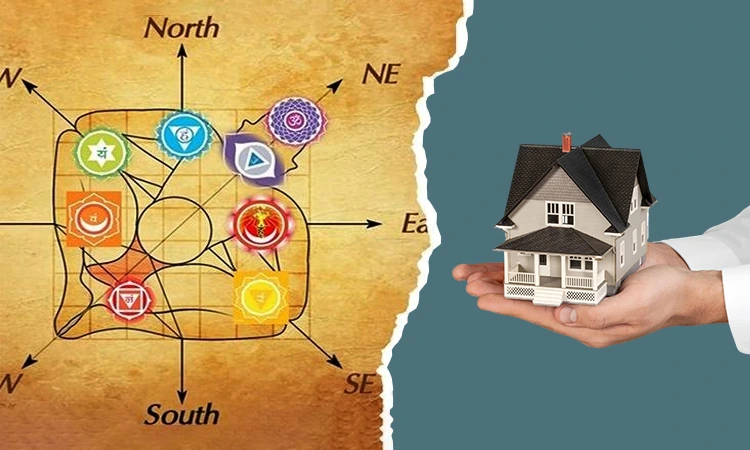
Vastu-Compliant Home Designs: Why They Matter in Modern Living
Our homes have developed as our haven in today’s fast-paced, technically advanced world. Our mood, productivity level, and overall welfare are all affected by our way of living, planning, plan and alignment of our living space. Vastu-Compliant Home Designs can help with that.
The Vastu Shastra, which has its roots in ancient Indian architectural knowledge, provides a set of principles to design aesthetically pleasing places. These guidelines can easily be integrated into modern apartments, villas and even small home plans – they are not only for traditional Indian homes.
What is Vastu Shastra?
Vastu Shastra, sometimes referred to as the “science of architecture,” has been used for thousands of years. Its foundation is the idea that the orientation, layout, and design of a home can affect the flow of “prana,” or positive energy. The guiding principles take into account things like:
- Alignment of directions (north, south, east, and west)
- Room and door placement
- Ventilation and natural light
- Balance of the elements (earth, water, fire, air, and space)
Why Vastu Still Matters in Modern Homes
Although some people believe that Vastu is outdated, its core concepts are quite relevant to modern needs. Urban homes nowadays have to deal with problems like poor ventilation, noise pollution, and limited space – all of which are naturally addressed by Vastu.
Vastu-compliant home designs are important now for the following reasons:
- Enhanced Well-Being: Both physical and mental health are directly impacted by proper lighting, ventilation and room arrangement.
- Better Energy Flow: A well-balanced home layout promotes a calm, natural atmosphere.
- Stress Reduction: Organized, clutter-free spaces promote relaxation.
- Holistic Living: A growing trend in sustainable construction, Vastu promotes balance between human existence and the natural world.
Key Vastu Principles for Modern Homes
Entrance Placement
The “mouth of energy” refers to the main entrance. To draw in good vibrations – it should ideally face north, east or northeast. The pathway ought to be well-lit and clear.
Room Layout
- For a welcoming atmosphere, the living room should be situated toward the northeast, north, or east.
- The kitchen, which symbolizes the fire element, is positioned in the southeast.
- The southwest orientation of the bedroom promotes stability and sound sleep.
- To ensure energy balance and hygiene, bathrooms should ideally be located in the northwest or southeast.
Natural Elements
The prana flow is improved by including open areas, plants, and natural light. The east has large windows that let in morning sunlight, which is beneficial and energizing.
Managing Clutter
Vastu places a lot of emphasis on maintaining a clean home. Clutter blocks energy channels – and creates uneasiness.
Vastu in Small House Plans
Vastu’s principles are as successful in small house plans, despite the common misconception that it only works in large homes. Careful room design, strategic window placements, and multipurpose furniture can all help small house ideas optimize energy flow without feeling cramped.
For instance:
- To create the illusion of larger, brighter spaces, use light wall colors.
- Keep heavy furniture out of the center of the home (Brahmasthan).
- Use mirrors to reflect light and provide the impression of additional space.
- Orienting the bed or desk following Vastu can increase comfort and productivity, even in studio apartments.
Vastu for Home Renovation Projects
You have the perfect opportunity to use Vastu principles when you’re undertaking a home renovation. A Vastu-aligned plan ensures that you’re enhancing—not disrupting —the home’s energy balance, whether you’re knocking down walls, shifting rooms, or adding extensions.
- When renovating, move windows or doors for better ventilation and natural light.
- To achieve the optimal directional placement, relocate the kitchen or bedroom.
- To balance the fire and air aspects, think about where to put electrical appliances.
Even small changes, such as clearing out storage spaces or installing a water feature in the northeast, can have a significant impact.
Vastu in Interior Design Choices
Vastu covers more than simply architectural design; it also applies to interior design and décor. It can be subtly integrated into modern design without compromising aesthetics.
- Colors: Warmer tones like red or orange work well in the south and southeast, while soothing shades like white, beige, or pale yellow work well in the north and east.
- Furniture Arrangement: Store bulky pieces, such as mattresses and closets, toward the southwest.
- Decorative Items: Avoid placing mirrors facing the bed; instead, place them on the north or east walls.
- Lighting: Use soft lighting in bedrooms for peaceful relaxation and bright lighting in the kitchen or study to promote energy.
Final Thoughts
Vastu-compliant home designs are about smart, thoughtful planning that works with the forces of nature, not superstition. You can create a space that feels balanced, uplifting, and peaceful by implementing these ideas. Integrating Vastu into your design approach can transform your living space into a true haven in today’s busy world, whether you’re building a new home, creating a small house plan, or renovating an existing one.
Taking the extra step to align your home with nature’s energy could be the most modern approach you can undertake in a time when our surroundings have a direct impact on our productivity, relationships, and health.

 Get an expert-reviewed estimate tailored to your project, location, and budget. Share your details for an accurate construction or renovation cost.
Get an expert-reviewed estimate tailored to your project, location, and budget. Share your details for an accurate construction or renovation cost.